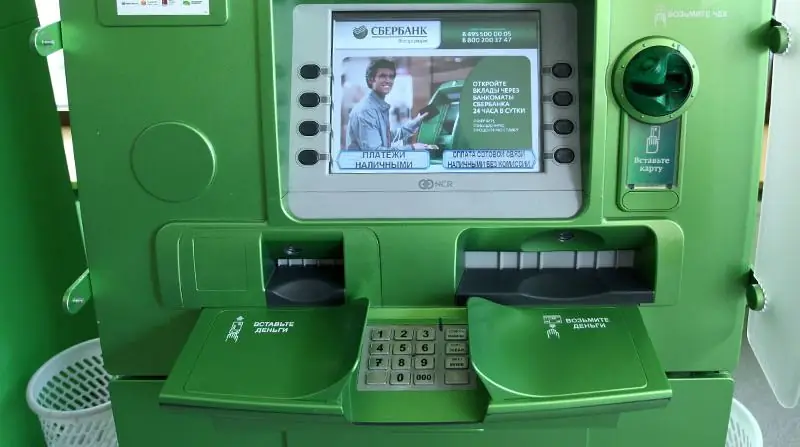2025 Author: Howard Calhoun | [email protected]. Last modified: 2025-01-24 13:10:38
Drip irrigation makes life much easier for greenhouse owners and summer residents. In order for the system to work as efficiently as possible and for a long time, the choice of equipment must be taken seriously. All components of the irrigation system must be reliable and of high quality.
Drip tape allows you to provide the highest quality and optimized watering on the site. Its feature is that the water supply occurs directly under the root system of plants. This not only favorably affects the good development of crops, but also prevents the rapid growth of weeds. Thus, with the help of drip irrigation, significant savings are achieved not only in water resources, but also in finances.

What is drip tape for?
This equipment allows you to provide the most optimal and high-quality watering for any suburban area, with a variety of landscapes. Distinctivea feature of the tape for drip irrigation is the possibility of dosing. This is a very rational approach that allows you to save resources and at the same time get the most out of the land. Before entering the drip tape, water passes through a special filter, avoiding clogging of the system and, accordingly, increasing its service life.
Next, the water enters the regulating channel of the tape. On its way, it passes through a large number of filter holes. Then it enters a special labyrinth channel, in which the water flow is adjusted. After that, the water goes to the outlets. The drip tape delivers water directly under the roots of plants, which ensures the full development of crops. In addition, such watering is used to prevent sunburn in plants.

Basic types
Today, three types of drip tapes are used in Russia:
- Emitter.
- Slotted.
- Maze.
Which drip tape is better? Each type has its own characteristics, advantages and disadvantages. Let's consider each of them separately.
Emitter
The emitter drip tape is different in that small special flat droppers, the so-called emitters, are built into it along its entire length. They serve to regulate the water pressure, and a special design creates a turbulent flow, due to which the water in the dripper is cleared of foreign particles. The cost of this type of equipmenthigher, and the smaller the pitch of the drip tapes, the more expensive the product.
Slotted
In this type of irrigation tape, there is a flexible labyrinth channel inside, which slows down the flow of water and makes its flow more uniform. In certain places there are thin holes through which water seeps out. This type of drip tape is easy to install and reliable in further operation. The disadvantages include the need for water filtration, because narrow slots often become clogged.

Maze
In this type of irrigation tape, the channel through which water flows has a zigzag shape, which significantly reduces the speed of water movement. The main advantage of such labyrinth tape equipment is the uniform heating of water, which is very good for all plants. Among the shortcomings can be noted frequent breakdowns during use and the complexity of installation. To date, the labyrinth tape is considered a slightly outdated option, but at the same time the least expensive.

Benefits of drip irrigation
Metered irrigation with drip tapes has its own functional advantages, especially when compared with traditional types of irrigation.
Among the advantages of this method are:
- Economy. This method can significantly reduce the consumption of water or liquid fertilizers, since they go directly to the root system of the grown plants.
- The whole processirrigation is automated. After installing the tape, you only need to turn the water supply on and off in a timely manner. The rest of the work will be done by the system itself.
- Due to the minimum amount of water entering the soil, nutrients are not washed out of it.
- Such irrigation of plants contributes to their good development, increasing yields and improving the quality of grown products.
- This method of watering eliminates the risk of burns on seedlings, which are caused by the sun's rays when surface watering through a conventional hose.
- The drip irrigation system saves people from having to carry fairly heavy hoses around the site.

How to make the right choice?
When choosing the best drip tape among the listed options, you should pay attention to several important parameters:
- Dia.
- Wall thickness.
- Water consumption.
- Emitter pitch.
Diameter
The diameter of the drip tape is very important. Most often in a tape, the length of which is not more than 300 m, the diameter of the tube is 16 mm, if 300-750 m - 22 mm. The choice of a suitable drip tape for watering the land depends on the following factors - the required length of the tape and the pressure in the plumbing system.
Wall thickness
When choosing such a tape, special attention should be paid to the thickness of the tube walls. The strength of the entire product, its functionality and duration of operation largely depend on this parameter. systems,having increased wall thickness, are best suited for watering plants with a long ripening period. Thinner wall belts are a great option for almost all early crops.
Distance between holes
This is also an equally important parameter. So, for example, if crops are planted close to each other, it is necessary to use watering tapes with a small distance between the holes. When determining the optimal distance, the type of soil on the land should be taken into account. For medium-grained soil, a drip tube with droppers is suitable, between which the distance is 30 cm.
Water consumption
This parameter depends on the following two factors:
- length of watering tape;
- plant water needs.
Low water consumption reduces friction and makes it possible to more efficiently water long rows of crops. In addition, the system will not need a higher level of filtering. It is worth paying attention to what pressure is in the emitter. If the indicator is 0.7 bar, you need to choose a tape for irrigation based on the following parameters:
- for watering plants from the reed family, a flow rate of 1.5 l/h is suitable;
- For most crops choose universal watering - flow rate 1.0 l/h;
- tape with low seepage rate and flow rate of 0.6L/h can irrigate the ground for a long time, good for long pipelines.

DIY installation
The easiest way of this kinddo-it-yourself irrigation is a system in which water is supplied to irrigation points by gravity.
To do this, you need to take a sufficiently capacious container for water and install it on a small hill. It should be taken into account that the higher the installation level of the water tank, the higher the pressure in the irrigation system will be. For every meter it increases by 0.1 bar. This means that with a tank height of 1 m, the pressure in the system will be 0.1 bar, with a height of 2 m it will be 0.2 bar, etc.

In the bottom of the tank, an outlet pipe is cut. At the same time, its upper edge should be slightly higher than the bottom itself. This is necessary so that the nozzle does not clog falling debris. A tap is installed on the inset on the outside of the tank, to which a filter for primary water purification is subsequently connected.
Then, from the tie-in filter and with a crane, the base (distribution) pipe is laid perpendicular to the beds. Preliminarily, holes are drilled on it for smart connectors, which are located according to the beds. Next, a tap is mounted at the end of the distribution pipe, which is necessary for periodically flushing the entire drip system.
At the next stage, connectors are attached to the holes. Then a tape system is laid from them along the beds. In this case, it is necessary to ensure that the emitter droppers are located on top. The end of the tape opposite to the distribution pipe is securely muffled (you can tie it well with a rope).
For watering plants,planted in one row, the tape is laid on the side. On two-row beds, laying is done in the middle between rows of plants.
Fittings
Drip tape fittings are special elements that are mounted at the junction of this equipment with a water source or when changing to a different diameter.
Polyethylene fittings:
- Repair connection. These elements are used for damage and rupture of tapes. Can also be used to add sections.
- Knee. Serve for docking of a drip tape with a polypropylene pipe. Can be used as a water regulator.
- Clamping tee. It is necessary for branching the drip tape.
- Cranes. Used to regulate the supply of water to the irrigation system.
- Stubs. Used in the repair of tapes for drip irrigation. They avoid pressure loss.
- Rubbers for starters. Such a part serves to seal and seal irrigation connections.
This is not a complete list of elements for organizing drip irrigation. Fittings are made of high quality polyethylene, which is not afraid of the influence of UV rays.
If you approach the issue of choosing a drip tape responsibly, effective watering of the land will be guaranteed.
Recommended:
Can't connect to my WiFi. Common Problems and Solutions

Are you trying again to connect your laptop, tablet or smartphone to Wi-Fi, but all your attempts are in vain? Then this article is for you
Drip irrigation "Beetle": manufacturer, instructions, reviews

Beetle drip irrigation is the most affordable way to grow a rich crop even in hot, dry summers. This kit will save water and time for regular watering with a watering can and hose and will be more effective for plants
The best job in the world: top 10 best professions, job responsibilities, working conditions, material and moral pleasure from work

Somewhere between your dream job and your actual job, there are some of the best jobs in the world. What positions are happy people in? While some of the coolest careers are also among the rarest jobs in the world, there are many dream jobs available to apply for and interview. What is the best job in the world - the highest paid or the one that is for the soul?
How to connect auto payment in Sberbank: instructions and methods

Sberbank offers customers to save time and money when paying for cellular communications and utilities. This is easy to do with autopay. This service allows you to forget about the need to independently transfer cash to the providers of housing and communal services or when replenishing the balance of a mobile phone. Customers can connect Sberbank auto payment at the office, at terminals or using bank services
Which pension fund to choose: reviews, rating. Which non-state pension fund is better to choose?

The pension system in the Russian Federation is built in such a way that citizens independently decide where to direct their savings: to form the insurance or funded part of payments. All citizens had the opportunity to choose until 2016. For two years in a row, the ability to distribute savings has been suspended. For all Russians, deductions from wages (22%) form the insurance part of the pension. Therefore, the question remains, which pension fund to choose to fulfill these tasks: public or private?

